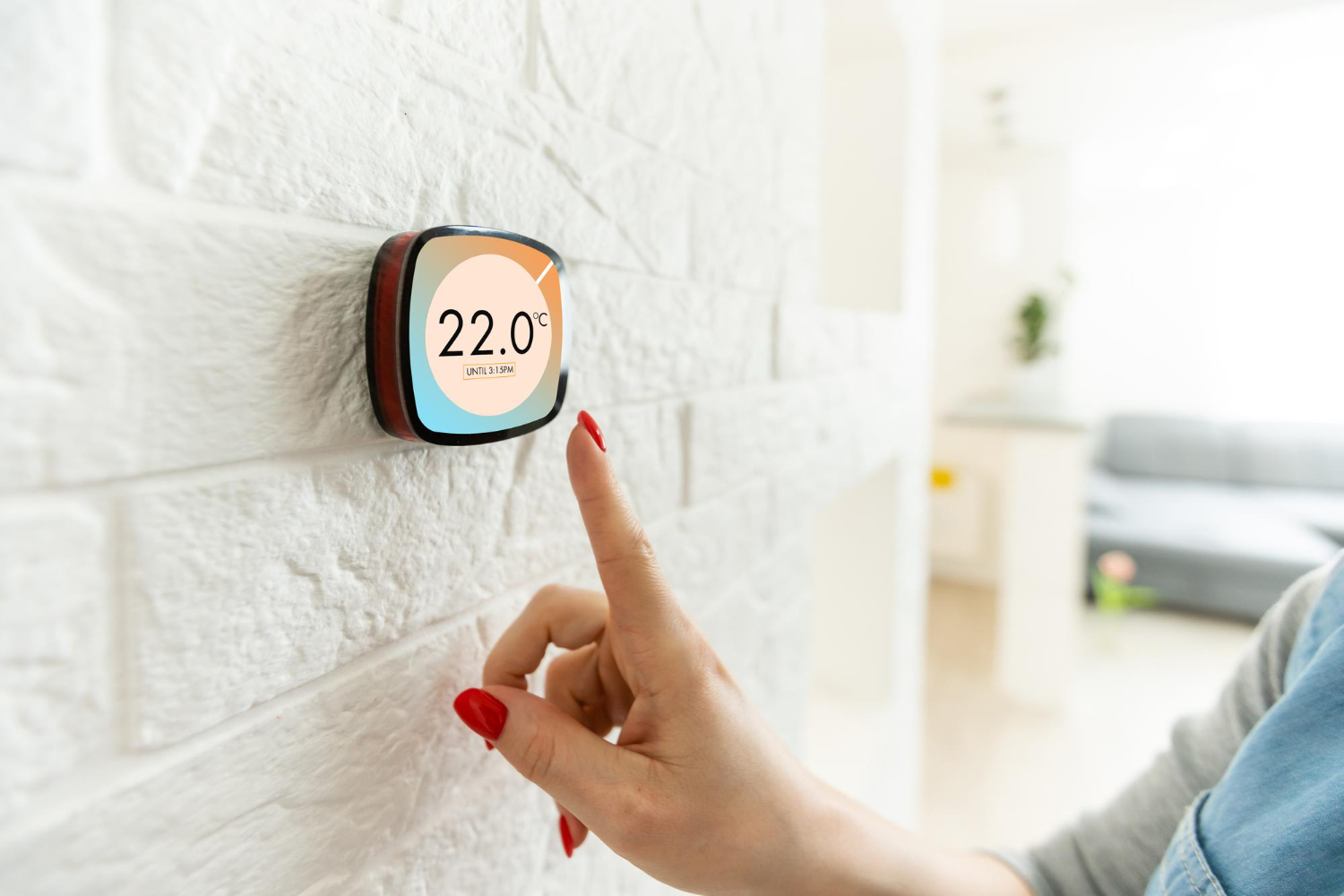If your air conditioning system in Glen Carbon isn’t keeping your home comfortable, the problem might not be your AC unit itself. Many homeowners overlook one of the smallest but most critical components of the system — the thermostat. When the thermostat isn’t working right, even the best AC system will struggle to maintain the correct temperature. Spotting trouble early can prevent unnecessary wear on your unit and help you stay cool during peak summer heat.
A thermostat isn’t just a temperature gauge on your wall. It’s the control center for your entire cooling system. If it fails, it can throw everything off from how often your AC kicks on to whether it runs at all. Whether you’re dealing with an unresponsive screen or temperatures inside your home don’t match the setting, learning how to identify and troubleshoot thermostat problems can keep your system running more efficiently and save time on future repairs.
Understanding AC Thermostat Issues
When your AC isn’t performing like it used to, your first instinct might be to check the vents or listen for strange noises. But often, problems begin with the thermostat. It may seem like a simple device, but its job is more complex than it appears. It constantly measures the room temperature and communicates with the AC system to turn it on or off based on your settings. If something interrupts that communication, your comfort is at risk.
Common signs of a problem include:
– The thermostat display is blank or unresponsive
– Your home feels hotter or colder than the setting
– The AC turns off too soon or keeps running too long
– The system won’t turn on at all
Each of these issues can point to a different underlying cause. For example, if your home never seems to cool down despite lowering the setting, your thermostat may have a faulty sensor. If the AC keeps short cycling or doesn’t respond when you adjust the temperature, the wiring or calibration could be off. These small issues become more obvious during higher AC usage, like Glen Carbon’s hot summer afternoons, when the system is under greater strain to keep up.
Thermostat problems also affect your energy use. When the thermostat misreads temperatures, your AC might turn on when it isn’t needed or fail to cool the house when it should. That means discomfort and potentially higher energy costs. Resolving these issues early can restore efficiency and help your system last longer.
Diagnosing Common Thermostat Problems
Once you’ve noticed your AC isn’t responding properly, narrowing down what’s wrong is the next step. Thermostat issues come in a few forms, some of which are easier to spot and address than others. Being aware of these common problems can help you know what to look for.
1. Unresponsive thermostat
If the screen is blank or not showing your selected settings, it may not be getting power. This could be due to dead batteries, a tripped breaker, or a loose connection.
2. Incorrect temperature readings
If the inside of your home feels much different from what the display shows, the sensor may be malfunctioning. This leads to your AC either overworking or not turning on when needed.
3. AC won’t turn on or off at the right time
A thermostat that delays commands or never activates the AC might be dealing with faulty wiring or internal programming issues.
4. Inconsistent temperature control
If some rooms are much colder or warmer than others, this may not be a ductwork problem. A miscalibrated or poorly placed thermostat could be giving inaccurate commands to the AC system.
An example many homeowners run into is when someone notices the AC fan shutting off too soon after startup. After checking everything else and still finding no major issue with the unit, the thermostat is often the last place they check, only to find it’s the source of the problem all along.
Recognizing these signs early on can help avoid bigger, more expensive problems with the AC unit down the line. Once you’ve identified one or more of these symptoms, the next step is performing basic checks to either resolve the issue or confirm it needs professional attention.
Steps to Troubleshoot Thermostat Issues
Before assuming the worst about your AC system, it’s helpful to check whether the thermostat is the issue. In many cases, what seems like a major malfunction turns out to be a small, fixable problem with the settings or hardware. Here are some starting points worth checking:
1. Check the power supply and batteries
If you have a battery-powered thermostat, replacing the batteries is usually the first and easiest fix. For hardwired models, make sure the circuit breaker hasn’t tripped and that the wiring isn’t loose or damaged. If it’s still unresponsive after checking both of those, it could point to internal failure.
2. Confirm correct settings
Ensure the thermostat is set to cool and that the temperature is set lower than the current room temperature. It’s easy to accidentally flip it to heat or off, especially with newer digital or touchscreen models.
3. Clean internal components
Open the thermostat cover and gently clean any visible dust or debris around the sensor or wiring. Sometimes dirt buildup can affect how well the sensor reads the room’s temperature, leading to poor control over cooling cycles.
4. Double-check placement
If a thermostat is placed in direct sunlight, near heat-producing appliances, or next to doors and windows, it may not accurately gauge the room temperature. This can cause it to send faulty signals to your AC system. It’s best for thermostats to be mounted on an interior wall away from such influences.
Taking these steps may eliminate simple causes of thermostat trouble. If none of these make a difference, a deeper issue could be at play. That’s usually the point when it makes sense to involve our technicians for further inspection.
When to Call Professionals for Help
While many thermostat issues can start with small fixes, not all problems are so straightforward. If you’ve walked through the basic checks and your AC is still acting up or your thermostat still isn’t responding properly, it’s likely time to bring in our professionals.
Some situations that usually require expert attention include:
– Wiring problems that prevent the thermostat from communicating properly with the AC
– Firmware or internal programming issues in digital models
– Improper thermostat installation or calibration
– Frequent short cycling even when settings seem correct
These types of problems aren’t just frustrating. They can cause your system to work harder for longer periods, adding stress to major components. Over time, this can shorten the life of your AC unit and raise your energy bills. It’s much more efficient to let our professionals diagnose and repair the issue accurately.
Our technicians are trained to test for electrical continuity, check for correct calibration, and confirm compatibility across modern systems, including smart thermostats. They can quickly determine whether the thermostat needs recalibration, replacement, or if there’s a deeper problem inside the cooling unit itself.
Getting a professional diagnosis early helps prevent more serious problems from developing later during Glen Carbon’s peak cooling season. It’s also a good way to make sure that small inconsistencies in indoor comfort don’t become bigger concerns during weeks of heavy AC use.
Keeping Your Thermostat in Optimal Condition
Once your thermostat is working properly again, simple routine maintenance can extend its life and keep your AC system running more reliably. Thermostats aren’t high-maintenance, but they do need occasional attention.
Make it a habit to:
– Change batteries at least once a year for battery-powered models
– Gently dust the thermostat’s interior components every few months
– Avoid bumping temperature settings frequently or drastically
– Check placement if you’ve done any recent renovations that might affect airflow or nearby lighting
If your current model is outdated or lacks basic programmable features, now might be a good time to consider an upgrade. Programmable thermostats let you optimize your cooling schedule based on your lifestyle, while smart thermostats offer remote control options and learning capabilities. These can help improve comfort while minimizing unnecessary strain on your AC unit.
Before switching to a new thermostat, it’s a good idea to confirm whether it’s compatible with your existing AC system. Different units may require different voltages or wiring setups. Choosing the wrong thermostat can cause more problems than it solves, which is why system compatibility always matters.
Our technicians can assist in deciding whether an upgrade is right for your home and can handle all setup and installation, avoiding miswiring and programming issues that might come with trying to handle it yourself.
Ensuring Your AC Runs Smoothly in Glen Carbon
Thermostat problems can easily go unnoticed, especially when your AC is doing most of the heavy lifting during summer in Glen Carbon. But ignoring signs like inconsistent cooling, a blank screen, or irregular system start-ups could mean bigger repairs down the road. Spotting those early and addressing them can keep you ahead of the season’s demands.
Staying cool shouldn’t involve constant guesswork or thermostat adjustments. Peace of mind comes from knowing your system responds correctly and efficiently to your settings. Whether it’s routine thermostat maintenance or a deeper issue with calibration or placement, a well-functioning thermostat plays a central role in your home’s comfort.
When your system doesn’t perform the way it should, don’t assume the worst about the AC unit itself. Starting with the thermostat can help pinpoint issues sooner and lead to quicker resolutions that keep your whole home comfortable through the summer heat.
If you continue to experience thermostat issues affecting your cooling performance during Glen Carbon’s hot season, B & W Heating and Cooling, Inc understands that prompt and reliable air conditioner repair in Glen Carbon is essential to restore comfort. For a quick estimate or to book a service visit, please contact us today.


